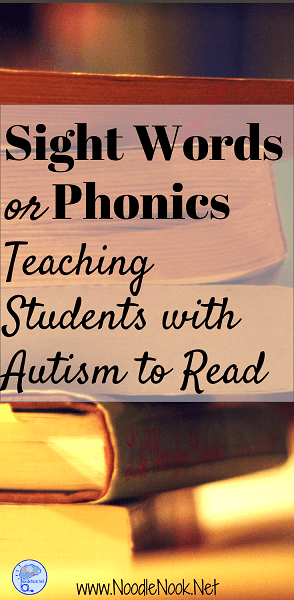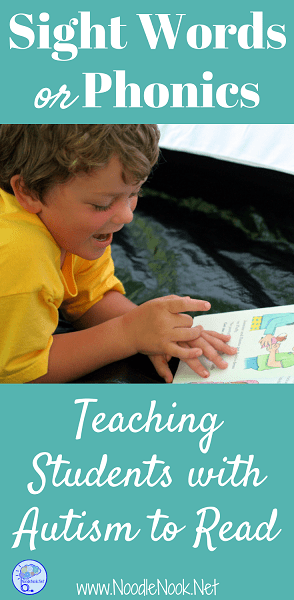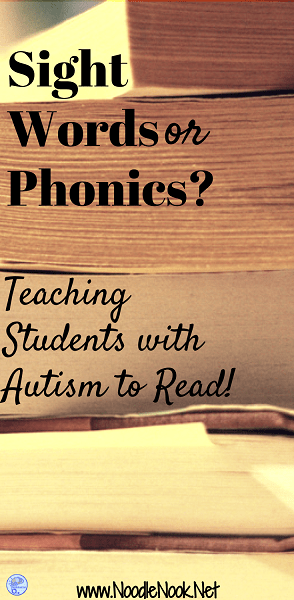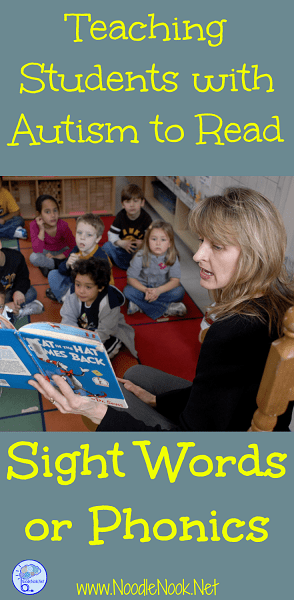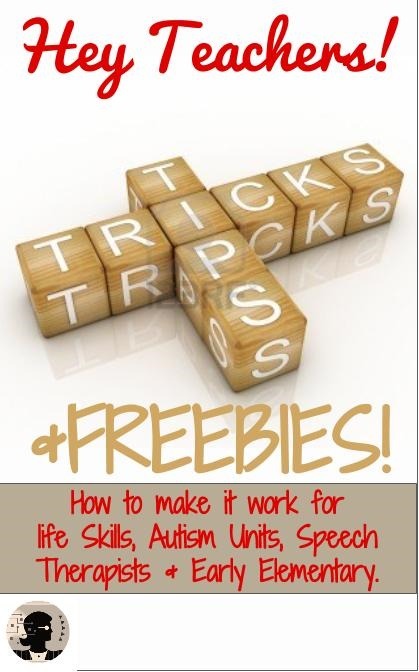Teaching Reading to Students with Autism
Teaching kids with Autism to read. It seems to counter-intuitive to write that sentence… it implies that you teach kids with Autism to read differently. Truth is all of the strategies and activities you use to teach reading in a general education setting will work with students with Autism. You may have to tweak the delivery, but never think for a second that a student with Autism cannot learn to read.
[dt_gap height=”10″ /]
Overcoming Obstacles of Reading Instruction
Students with Autism can learn to read and read well. With that said, there are challenges to teaching students with Autism largely centered on behavior and attention, response modes to express comprehension, and overall reading fluency. In order to address behavior, I suggest you read about the Function of Behavior and Why Kids with Autism Do That. Using positive behavior supports and behavior management techniques will help with that.
Don’t Fall Into the Behavior Trap
What I DON’T want you to do is to fall into the behavior trap. I don’t want you to think IF a student has behavior issues, THEN they don’t get to learn to read or you can’t be bothered to try. I see it over and over again… and it stings every time. Students with the worst behavior get the worst education. Believe me, if you can work on a response mode for students with Autism who have severe behavior, you may be surprised to find it will lessen the likelihood of those behaviors. AND it will also allow you to better assess comprehension. None of these skills (reading and communication) need to be learned independent of one another. You will get more progress teaching them in tandem and as the students shows skill acquisition. You will need to address the behavior concerns, but don’t let the behavior trap get you!
[dt_gap height=”10″ /]
Phonics or Sight Words for Students With Autism
If I only had a dollar… I get this question a lot when I teach Literacy for Students with Significant Disabilities. What we tend to see over and over in self contained classrooms or classes with students who have significant disabilities is a singular focus on Sight Word instruction. Many programs exist to teach reading which rely on students systematically learning a series of sight words in a prescribed order. School districts flock to these programs because they have research based outcomes on measurable progress over time. They work. Even I have to admit that.
What I also have to acknowledge is that those programs, because they are so prescribed and individual, demand a teacher to do some very purposeful 1:1 instruction with students on a consistent basis with measurable outcomes. It could be that regularity is what delivers those outcomes. No matter what path you choose, phonics or sight words, you absolutely must be consistent in delivery. Students in general education classes get 60-90 minute literacy blocks where they are engaged throughout that time on skill acquisition and practicing. In a self contained classroom, there are so many needs to be met that a standard literacy block can dwindles down to, sometimes, just a handful of quality minutes.
[dt_gap height=”10″ /]
Ready Means Never
Another pitfall of the literacy block in self contained classrooms or Autism Units is that teachers often believe they need to wait for a student to be ready. Ready to learn a new skill. Ready because they learned the prerequisite skill. Seemingly ready to learn at all. But as Margaret McLaughlin from the University of Maryland stated:
“We must understand that ‘ready means never.’ If we wait until students are ready to work on challenging standards by virtue of having mastered basic skills, they will never work on challenging standards.”
A teacher, seemingly out to help a student progress on their IEP goals, will start with teaching the first letter of the alphabet or the first word of the Fry Word/Dolch Words. If a student fails to make rapid progress or even if they do, we focus solely on that skill in the absence of all the other literacy skills needed to really become literate. I have seen students working on identifying the first 5 letters of the alphabet for years. Years. It IS their IEP goal after all. But all students learning to read need to be immersed in a few things:
* A word rich environment
* Sight word instruction
* Solid phonic instruction
* Exposure to literature (read, read, read)
* Teaching comprehension with Think Alouds
* Response mode to get to Comprehension
And all of these things should be happening at the same time. Each student should be getting exposure to all of these things… not one in isolation because it’s the student’s goal.
[dt_gap height=”10″ /]
So Wait… Phonics Versus Sight Words
In case you missed it, you need both. You may find your sight word instruction is a focus in your class or as dictated by your school district, but you absolutely need to teach phonics. That phonics instruction is not done alphabetically. Most authorities suggest teaching these letters first (s, a, t, i, p, n) as they allow a student to start decoding words after learning the third letter.
The reality of reading is you may be well served to teach sight words because of the measurable and real outcomes, but your students will come across words at some point or another that are not part of their sight word repertoire and will need at least some phonics background to decode the word. You cannot omit the phonics with the sight words.
[dt_gap height=”10″ /]
What Next?
No matter how you combine phonics or sight words into your literacy instruction, the important part is you are delivering quality and making progress with all your students. Being able to read is one of the biggest predictors of post-secondary independence and success for students with significant disabilities. If you can equip them with some basic reading skills before they graduate, you are improving their overall quality of life. So stay strong and teach on!


